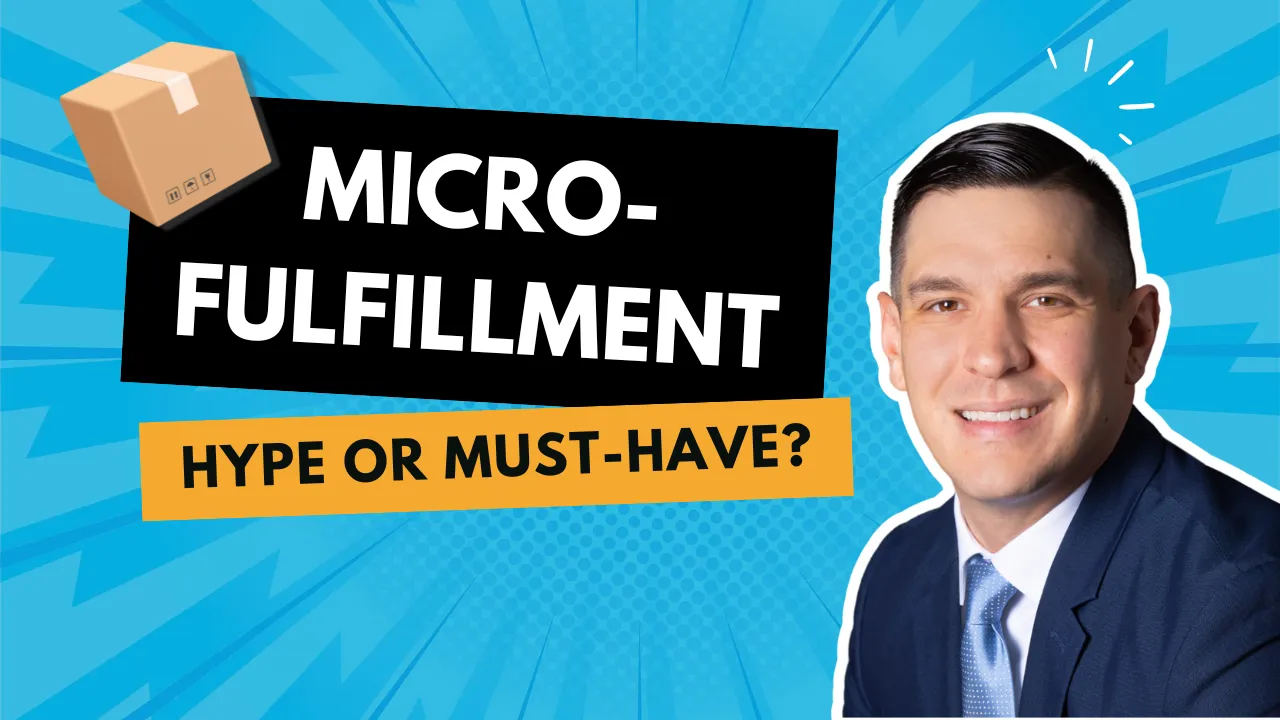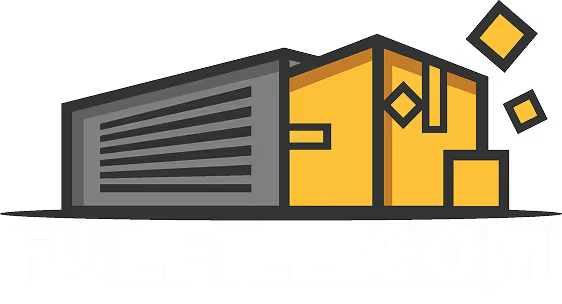Quick Jump
Want to deliver orders in hours instead of days? Micro fulfillment centers are small, urban warehouses that make ultra-fast delivery profitable. Here's everything you need to know about this game-changing model—from the tech behind it to whether it's right for your business.
What is Micro Fulfillment? Understanding the Basics
Micro fulfillment represents a fundamental shift in how eCommerce businesses approach order fulfillment and last-mile delivery. Unlike traditional large-scale distribution centers located on the outskirts of metropolitan areas, micro fulfillment centers (MFCs) are compact, highly automated facilities positioned within or near urban centers to enable rapid order processing and delivery.
Key Characteristics of Micro Fulfillment Centers
Size and Scale:
- Typically 3,000 to 10,000 square feet (compared to 300,000+ sq ft traditional warehouses)
- Hold 5,000-15,000 SKUs focused on high-velocity products
- Process 500-2,000 orders per day
- Employ 10-25 workers per shift
Location Strategy:
- Within 10 miles of target customer base
- Often in repurposed retail spaces, industrial parks, or urban warehouses
- Strategic positioning for 1-2 hour delivery windows
- Multiple small facilities instead of single large warehouses
Technology Integration:
- Heavy reliance on automation and robotics
- AI-powered inventory management
- Sophisticated order routing algorithms
- Real-time demand forecasting
The Evolution from Traditional to Micro Fulfillment
The transition to micro fulfillment reflects changing consumer expectations and urban logistics challenges:
Traditional Model:
- Large distribution centers 50-100 miles from city centers
- 2-5 day standard delivery
- Lower real estate costs but higher transportation expenses
- Batch processing of orders
Micro Fulfillment Model:
- Small facilities within urban areas
- Same-day or 1-2 hour delivery capability
- Higher real estate costs offset by reduced transportation
- Continuous order processing throughout the day
The Technology Powering Micro Fulfillment
Modern micro fulfillment centers leverage cutting-edge technology to maximize efficiency within limited space:
1. Automated Storage and Retrieval Systems (AS/RS)
Grid-Based Systems:
- Robotic systems that utilize vertical space efficiently
- Robots navigate on rails above storage bins
- Can achieve 4-6x the storage density of traditional shelving
- Examples: AutoStore, Ocado Smart Platform
Shuttle Systems:
- Autonomous vehicles operating within racking structures
- Retrieve products and deliver to picking stations
- Ideal for high-SKU-count operations
- Examples: Knapp OSR Shuttle, Dematic Multishuttle
2. Artificial Intelligence and Machine Learning
Demand Forecasting:
- Predictive analytics for inventory positioning
- Seasonal and trend analysis at hyperlocal levels
- Real-time adjustment based on order patterns
- Integration with weather, events, and local data
Order Optimization:
- Intelligent batching of orders for efficiency
- Route optimization for delivery personnel
- Dynamic slotting based on velocity
- Automated reordering triggers
3. Robotics and Automation
Goods-to-Person Systems:
- Automated guided vehicles (AGVs) bring products to pickers
- Reduces walking time by up to 80%
- Increases picking accuracy to 99.9%+
- Enables 24/7 operation capability
Robotic Picking:
- Computer vision for product identification
- Gripper technology for various product types
- Integration with packing systems
- Continuous improvement through machine learning
4. Software Integration
Warehouse Management Systems (WMS):
- Real-time inventory tracking
- Order prioritization algorithms
- Integration with eCommerce platforms
- Performance analytics and reporting
Order Management Systems (OMS):
- Distributed order management across multiple MFCs
- Intelligent order routing based on inventory and location
- Customer communication and tracking
- Returns management integration
Benefits of Micro Fulfillment for eCommerce
1. Ultra-Fast Delivery Capabilities
Micro fulfillment enables delivery speeds previously impossible with traditional models:
- 1-2 Hour Delivery: Achievable for 70-80% of urban customers
- Same-Day Delivery: 95%+ coverage within metropolitan areas
- Scheduled Delivery Windows: 1-2 hour precision for customer convenience
- Instant Gratification: Competing with immediate retail availability
2. Reduced Last-Mile Costs
Despite higher real estate costs, micro fulfillment can reduce overall delivery expenses:
- Shorter Delivery Routes: 50-70% reduction in average delivery distance
- Higher Delivery Density: More deliveries per route
- Reduced Failed Deliveries: Better timing accuracy reduces redelivery needs
- Lower Carbon Footprint: Shorter distances mean reduced emissions
3. Improved Inventory Management
Distributed inventory across multiple micro fulfillment centers offers advantages:
- Reduced Safety Stock: Lower inventory requirements per location
- Better Product Availability: Strategic positioning based on local demand
- Faster Inventory Turns: 20-30% improvement in inventory turnover
- Reduced Obsolescence: Better matching of supply to local demand
4. Enhanced Customer Experience
Micro fulfillment directly impacts customer satisfaction:
- Convenience: Ultra-fast delivery meets instant gratification needs
- Reliability: Higher on-time delivery rates
- Flexibility: More delivery window options
- Sustainability: Appeals to environmentally conscious consumers
5. Competitive Advantage
Early adopters of micro fulfillment gain market advantages:
- Market Differentiation: Stand out with superior delivery options
- Customer Retention: Fast delivery increases repeat purchase rates
- Premium Pricing: Customers willing to pay for convenience
- Market Share Growth: Capture customers from slower competitors
Challenges and Considerations
While micro fulfillment offers significant benefits, implementation comes with challenges:
1. High Initial Investment
Capital Requirements:
- Automation technology: $500,000 - $5 million per facility
- Real estate in urban areas: 3-5x suburban warehouse costs
- Integration and setup: $100,000 - $500,000
- Multiple facilities needed for coverage
ROI Considerations:
- Typical payback period: 2-4 years
- Requires sufficient order volume to justify investment
- Must factor in operational savings and revenue growth
2. Real Estate Challenges
Location Constraints:
- Limited availability of suitable urban properties
- Zoning restrictions in some areas
- Competition from other urban uses
- Parking and access requirements for delivery vehicles
Cost Management:
- Urban real estate premiums
- Long-term lease commitments
- Utilities and operating costs higher in cities
- Property tax considerations
3. Operational Complexity
Multi-Site Management:
- Coordinating inventory across multiple locations
- Maintaining service levels at each facility
- Staff training and management
- Quality control across locations
Technology Integration:
- Ensuring systems communicate effectively
- Managing data across platforms
- Maintaining uptime and reliability
- Continuous optimization requirements
4. Limited Product Range
SKU Constraints:
- Space limitations restrict product variety
- Focus on high-velocity items
- May not suit all product categories
- Seasonal inventory challenges
Product Suitability:
- Best for standard-sized items
- Challenges with oversized products
- Temperature-controlled items need special consideration
- Fragile items require careful handling
When Does Micro Fulfillment Make Sense?
Micro fulfillment isn't suitable for every eCommerce business. Consider these factors:
Ideal Scenarios for Micro Fulfillment
1. Urban Market Focus:
- High concentration of customers in metropolitan areas
- Dense population within delivery radius
- Customers value speed over price
- Competition offering fast delivery
2. High Order Volume:
- Minimum 200-300 orders per day per location
- Consistent daily demand
- Growth trajectory supporting expansion
- Repeat purchase behavior
3. Suitable Product Mix:
- Products under 10 pounds
- Standard packaging sizes
- High inventory turnover
- Limited SKU count (under 10,000)
4. Premium Market Position:
- Customers willing to pay for convenience
- Brand differentiation through service
- High customer lifetime value
- Focus on customer experience
When to Avoid Micro Fulfillment
1. Rural or Suburban Focus:
- Low population density
- Customers accepting of standard delivery times
- Long distances between customers
2. Low Order Volume:
- Under 100 orders per day
- Highly seasonal business
- Unpredictable demand patterns
3. Unsuitable Products:
- Oversized or heavy items
- Very low margin products
- Highly diverse SKU requirements
- Special handling needs
Implementation Strategies for Micro Fulfillment
1. Pilot Program Approach
Start with a single micro fulfillment center to test the model:
Location Selection:
- Choose highest-density customer area
- Ensure good transportation access
- Consider multi-use facilities initially
- Plan for scalability
Technology Selection:
- Start with proven solutions
- Prioritize integration capabilities
- Consider modular systems for growth
- Focus on reliability over cutting-edge
Performance Metrics:
- Delivery time achievements
- Cost per order
- Customer satisfaction scores
- Operational efficiency metrics
2. Hybrid Model Implementation
Combine micro fulfillment with existing operations:
Hub-and-Spoke Design:
- Traditional DC as central hub
- Micro fulfillment centers as spokes
- Daily replenishment from hub
- Flexible inventory allocation
Inventory Strategy:
- High-velocity items in MFCs
- Long-tail products in central DC
- Dynamic reallocation based on demand
- Safety stock optimization
3. Partnership Models
Consider partnerships to reduce risk and investment:
3PL Partnerships:
- Utilize existing micro fulfillment networks
- Share facilities with other brands
- Leverage 3PL technology investments
- Flexible scaling options
Retail Partnerships:
- Use retail store space for fulfillment
- Leverage existing urban locations
- Share operational costs
- Access established infrastructure
4. Technology-First Strategy
Build operations around advanced technology:
Automation Selection:
- Evaluate ROI of different systems
- Consider space efficiency requirements
- Plan for future upgrades
- Ensure vendor support availability
Data Integration:
- Unified view across all locations
- Real-time inventory visibility
- Predictive analytics implementation
- Customer data integration
Case Studies: Micro Fulfillment Success Stories
Grocery Retailer Transforms Urban Delivery
A major grocery chain implemented micro fulfillment across 5 urban markets:
Challenge: Competing with instant delivery startups while managing fresh product quality
Solution:
- Deployed 8,000 sq ft automated MFCs in each market
- Integrated temperature-controlled zones
- Implemented AI-based demand forecasting
- Created dedicated delivery fleet
Results:
- 90% of orders delivered within 2 hours
- 35% reduction in last-mile costs
- 40% increase in order frequency
- 25% growth in market share
Fashion Brand Enables Same-Day Delivery
A direct-to-consumer fashion brand launched micro fulfillment in major cities:
Challenge: Competing with fast fashion retailers' instant gratification
Solution:
- Converted 5,000 sq ft spaces in fashion districts
- Focused on top 500 SKUs per location
- Integrated with influencer marketing for local demand
- Partnered with gig economy delivery services
Results:
- Same-day delivery for 85% of urban orders
- 50% increase in conversion rate
- 30% higher average order value
- 60% improvement in customer lifetime value
Electronics Retailer Reduces Returns
A consumer electronics company used micro fulfillment to improve customer satisfaction:
Challenge: High return rates due to delivery damage and customer urgency
Solution:
- Implemented careful handling protocols in MFCs
- Enabled try-before-buy with rapid delivery/pickup
- Created tech support integration at facilities
- Developed premium packaging for local delivery
Results:
- 40% reduction in damage-related returns
- 2-hour delivery for urgent tech needs
- 95% customer satisfaction scores
- 20% increase in premium product sales
The Future of Micro Fulfillment
Emerging Trends
1. Autonomous Delivery Integration:
- Drone delivery from micro fulfillment centers
- Autonomous vehicle deployment
- Robot delivery for last 100 feet
- Integrated routing optimization
2. Sustainable Operations:
- Solar-powered facilities
- Electric delivery vehicle fleets
- Zero-waste packaging systems
- Carbon-neutral delivery options
3. Advanced Personalization:
- AI-driven local inventory optimization
- Predictive ordering capabilities
- Personalized fulfillment options
- Dynamic pricing based on delivery speed
4. Network Effects:
- Shared micro fulfillment infrastructure
- Cross-brand collaboration
- Standardized automation platforms
- Industry-wide optimization
Market Projections
Industry analysts project significant growth in micro fulfillment:
- Market Size: Expected to reach $36 billion by 2030
- Adoption Rate: 40% of major retailers by 2027
- Technology Investment: $12 billion in automation by 2026
- Geographic Expansion: Coverage of top 50 US metros by 2028
Making the Micro Fulfillment Decision
Assessment Framework
Evaluate your readiness for micro fulfillment:
1. Market Analysis:
- Customer density mapping
- Competitive delivery offerings
- Price sensitivity analysis
- Growth projections
2. Operational Readiness:
- Current fulfillment costs
- Technology infrastructure
- Team capabilities
- Change management capacity
3. Financial Modeling:
- Investment requirements
- Operating cost projections
- Revenue impact estimates
- ROI calculations
4. Risk Assessment:
- Market uncertainty
- Technology risks
- Competitive responses
- Execution challenges
Implementation Roadmap
Phase 1: Planning (3-6 months):
- Market analysis and site selection
- Technology vendor evaluation
- Financial modeling and approval
- Team formation and training
Phase 2: Pilot (6-9 months):
- Single location implementation
- Technology deployment
- Process optimization
- Performance measurement
Phase 3: Expansion (12-24 months):
- Additional location rollout
- Network optimization
- Advanced feature implementation
- Continuous improvement
Phase 4: Optimization (Ongoing):
- AI/ML implementation
- Network effects realization
- New technology adoption
- Market expansion
Conclusion: The Micro Fulfillment Revolution
Micro fulfillment represents a fundamental shift in eCommerce logistics, enabling brands to meet rising customer expectations for speed and convenience. While implementation requires significant investment and operational change, the benefits of ultra-fast delivery, improved customer satisfaction, and competitive differentiation 18make it an increasingly essential strategy for urban-focused eCommerce businesses.
Success in micro fulfillment requires careful planning, appropriate technology selection, and a commitment to operational excellence. As the model matures and technology costs decrease, micro fulfillment will likely become the standard for urban eCommerce delivery rather than a competitive differentiator.
For eCommerce brands serving dense urban markets with suitable products and sufficient scale, the question is not whether to implement micro fulfillment, but how quickly they can do so before competitors gain an insurmountable advantage in the race for customer loyalty through superior delivery experiences.
Ready to explore micro fulfillment for your eCommerce business? Get matched with fulfillment providers offering micro fulfillment solutions.










